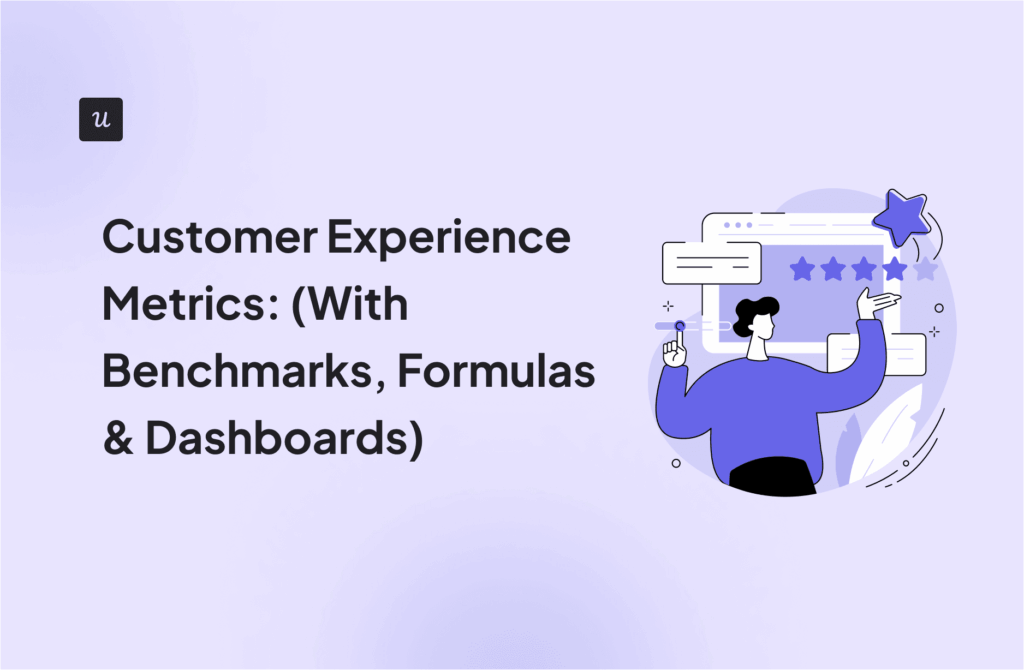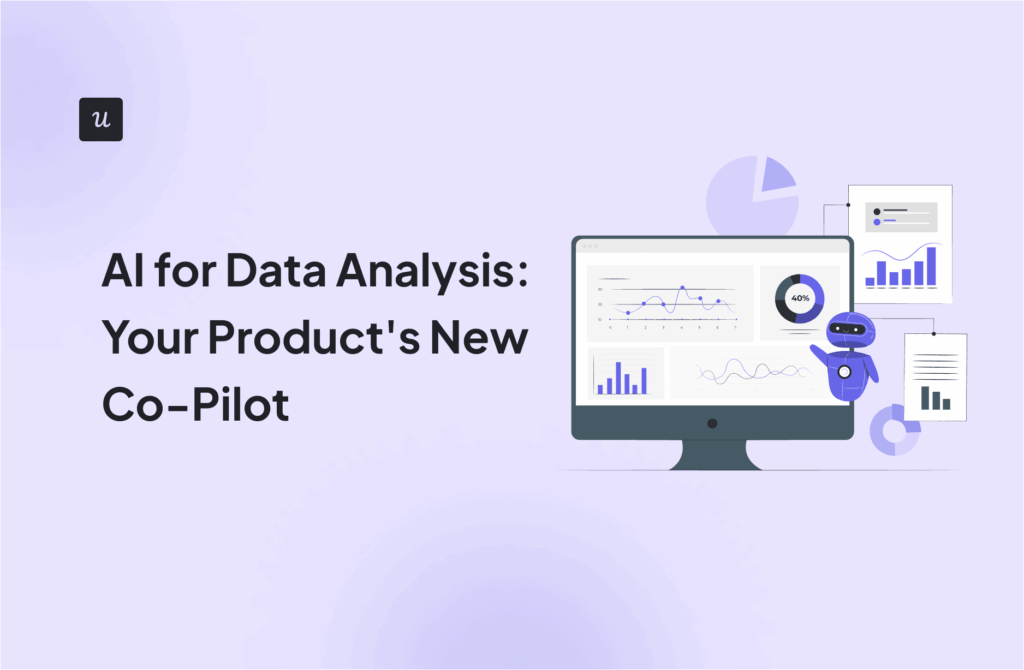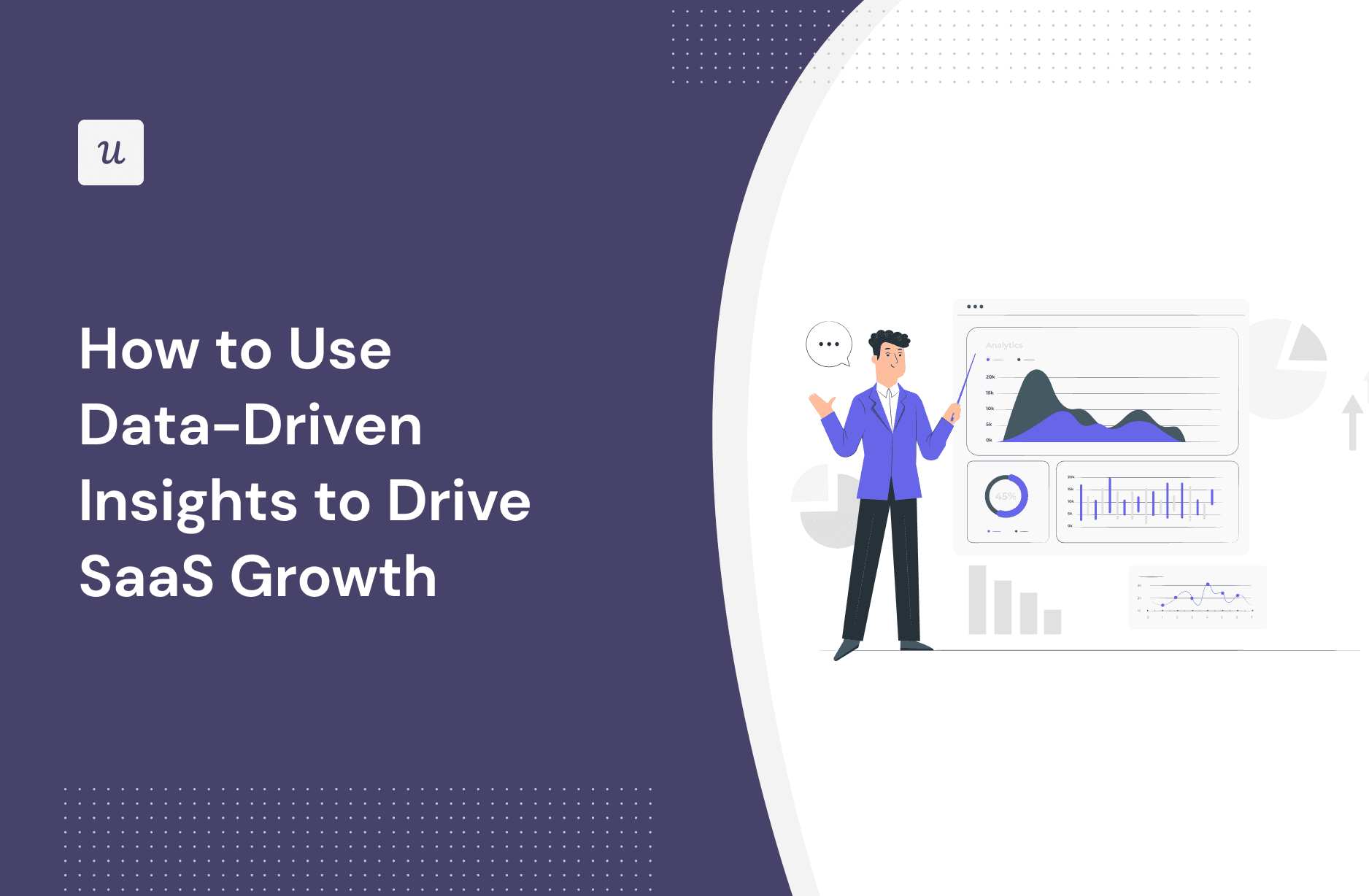
Data is the backbone of modern marketing. Thus, properly harnessing data-driven insights is key to achieving product growth and business success.
This article explores what data-driven insights are and why they are important.
It will also guide you through uncovering and harnessing these insights in your SaaS business.
How do you currently gather data to generate actionable, data-driven insights?
Try Userpilot Now
See Why 1,000+ Teams Choose Userpilot

Summary of how to use data-driven insights
- Data-driven insights are the conclusions reached from analyzing raw data and identifying the patterns and trends in them.
- These insights help modern businesses understand customers, create targeted marketing campaigns, identify business opportunities, and enhance the customer experience.
- To adopt a data-driven approach, you’ll need to first understand your business goals. Then, you’ll have to collect relevant data from the right sources, analyze the data for insights, and act on the insights.
- Data-driven insights can help you create resilient product growth strategies. For instance, market research data can help you decide on effective product management strategies.
- Similarly, in-app behavioral data can help you to optimize the user experience, and event data can reveal areas of improvement in your conversion funnel.
- Userpilot provides you with different methods of collecting data, analyzing it, and acting on it. To learn how this can help your business, book a demo today.
What are data-driven insights?
Data-driven insights are the information gathered from analyzing data to identify patterns, trends, and insights that help you make informed decisions.
When businesses collect and analyze data (from customers, marketing, etc.), they reach conclusions that help them make better decisions. These conclusions are data-driven insights.
Why are data-driven insights important?
Data-driven insights are essential to modern business operations as they provide business leaders with the full picture:
- Improve customer experience: Data-driven insights can help you identify customer pain points, buying patterns, and preferences. You can then tailor your marketing campaigns to match those needs or use that knowledge to personalize and improve the customer experience.
- Make data-driven decisions: Before making business strategy decisions, you can analyze relevant economic and financial data to better understand your finances. Weak finances may reveal the need for hiring freezes or lead you to postpone any market expansion plans.
- Unlock business opportunities: By identifying and analyzing relevant data, you can identify business opportunities, unlock areas for marketing improvement, and better satisfy customer needs.
How to uncover data-driven insights?
To follow a data-driven approach to business decision-making, you’ll need to:
- Understand your business goals. Defining your marketing goals and objectives will help you to identify which data you need to achieve those goals. For example, your goal may be to increase conversion or boost customer retention.
- Gather data. Collect structured or unstructured data from different data points and multiple data sources. This can be data from CRM platforms, customer feedback, website analytics, product analytics, social media data, etc.
- Visualize data to uncover insights. Data visualization helps you to make sense of your data more quickly. Charts, graphs, and maps make it easy to identify patterns or trends in data and present same to non-technical stakeholders.
- Analyzing data-driven insights. Dig deeper into your data to make sense of the patterns you’ve found. For instance, you can use predictive analytics tools to make forecasts, prescriptive tools to make recommendations, or diagnostic tools to pinpoint patterns.
Once you’re done with your data analysis, you’ll be all set to make data-driven decisions based on the insights you’ve gained.
Growth strategies based on data-driven insights
Data-driven insights provide businesses with valuable information that can help them make better decisions and drive growth.
Using these insights, businesses can create resilient growth strategies around their customers, products, or services.
Consider some examples of growth strategies based on data-driven insights:
Build product management strategies based on the insights from market research
Market research provides valuable information about customer needs, preferences, and other emerging industry trends. It also provides information on everything from market development to product positioning and pricing.
Data about your customers’ demographic profile, needs, motivations, and pain points, can help you to identify market gaps and opportunities. It can reveal how different product features impact customer satisfaction and market demand.
For example, customer surveys and interviews may reveal that language learners want an interactive app with a personalized experience. A developer may then implement VR-based learning for a more immersive experience while using AI to suggest personalized learning plans.
By paying attention to the data, this developer has discovered two features that could open up new markets and drive expansion.
Improve customer experience based on user behavior insights
User behavior data reveal your users’ preferences and patterns. This can help businesses tailor their products, services, and interactions to better match customers’ expectations and improve the customer experience.
Behavioral insights can help you identify friction points, personalize customer interactions, optimize and streamline the user journey, and address recurring pain points and areas of frustration.
For example, you can use feature tags to understand how users interact with a feature. You may then notice that few users interact with the feature, meaning that it may be unnoticeable.
Next, you can create a tooltip to guide users to the feature. This should aid feature discovery, helping more users to gain value from your product and, thus, improving the product experience for these users.
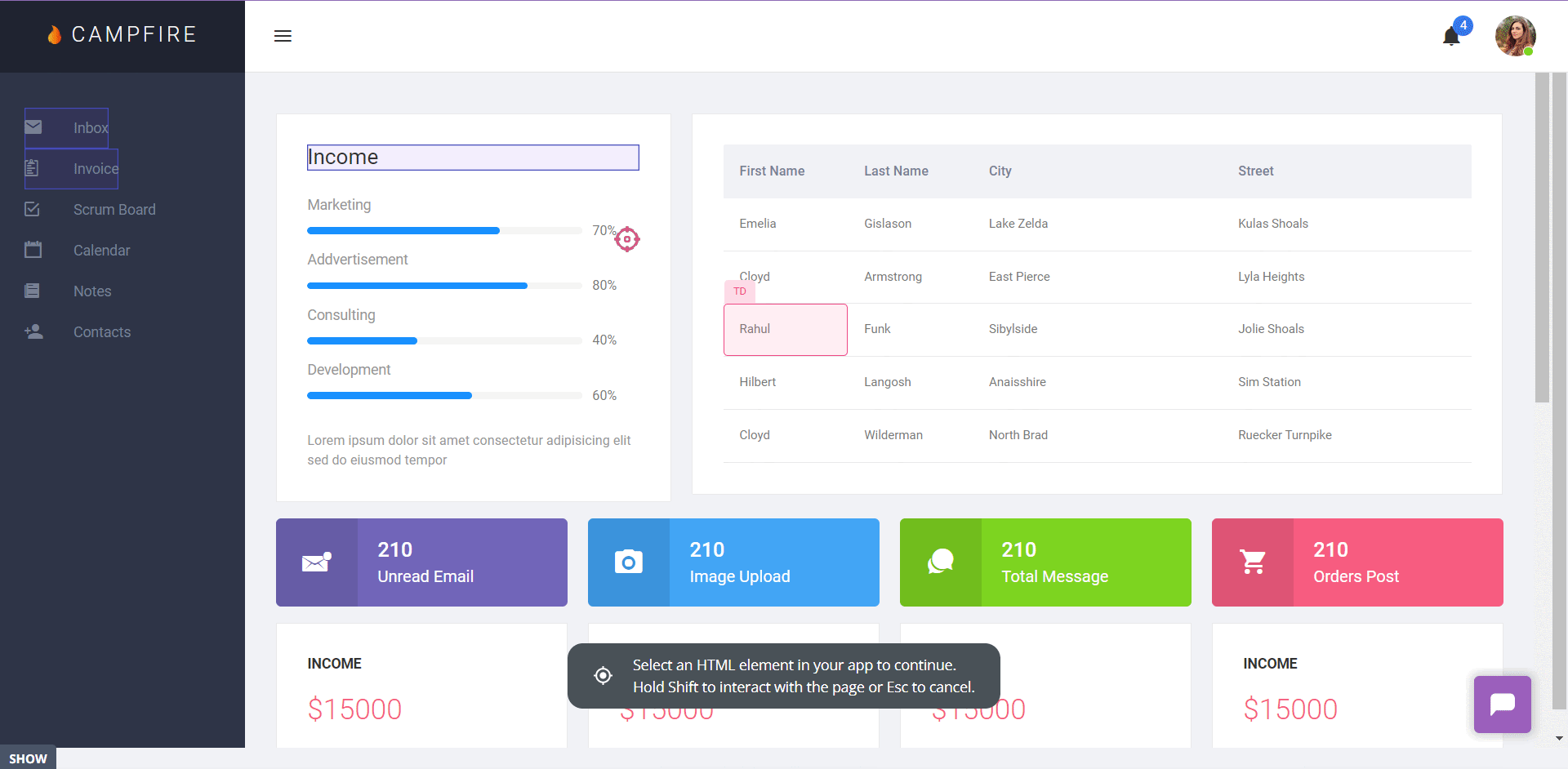
Optimize retention efforts based on AI insights
Using powerful AI algorithms, you can segment customers and predict each user’s churn propensity. You can then use these AI insights to proactively engage at-risk customers with personalized interventions.
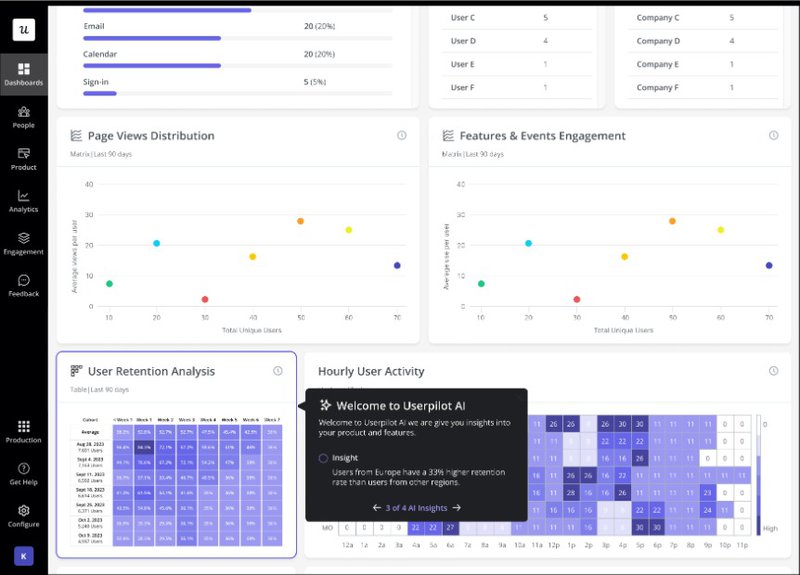
Currently, Userpilot lets you analyze behavioral data and make these decisions yourself. However, coming in Q1 2024, Userpilot AI will automatically analyze this data and share insights with you.
Optimize conversion funnel based on event data
Event data is useful for tracking each step of your conversion funnel and seeing how users progress through it. It covers everything from visited websites to in-app activities, purchases, and more.
You can visualize the funnel to identify friction areas and drop-off points within the conversion process and take action to fix them.
For instance, you may notice that a large amount of users abandon the checkout process on the payment page. This may indicate an issue with your pricing system or payment methods which needs to be addressed.
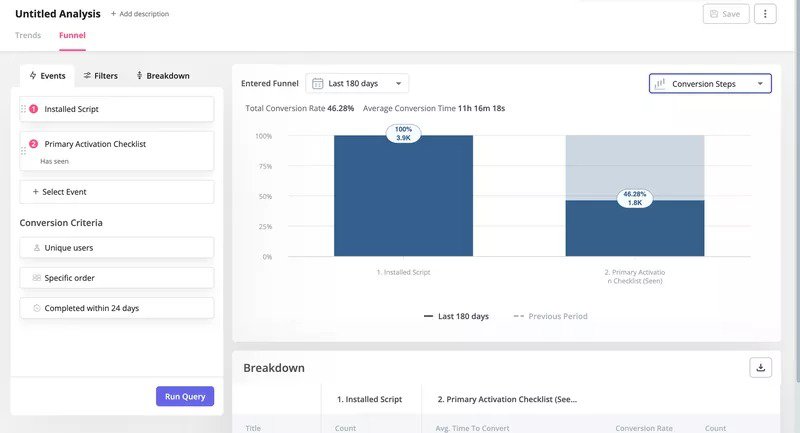
Meet customer needs based on insights from customer feedback
One way to get relevant data about your users is through customer feedback.
Data-driven insights from user feedback can reveal what users like/dislike about your product and what you can do to improve.
As you learn what users need, you can begin to personalize their experience to meet their needs.
For instance, feature request feedback may reveal features that users need the most to improve their experience.
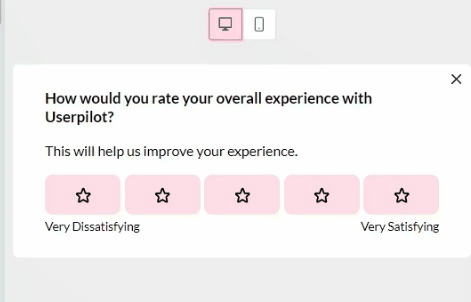
Data analysis tools
There are a wide variety of data analysis tools that help you to gather and integrate customer data and quickly analyze this data for insights.
Some of them include:
Userpilot
Userpilot is a product growth platform that helps you collect data and quickly make important business decisions. It offers a variety of ways to collect data, including through in-app surveys, event tracking, feature tags, funnel analysis, and more.
Using this data, you can understand customer behavior, build user segments, and create contextual in-app experiences.
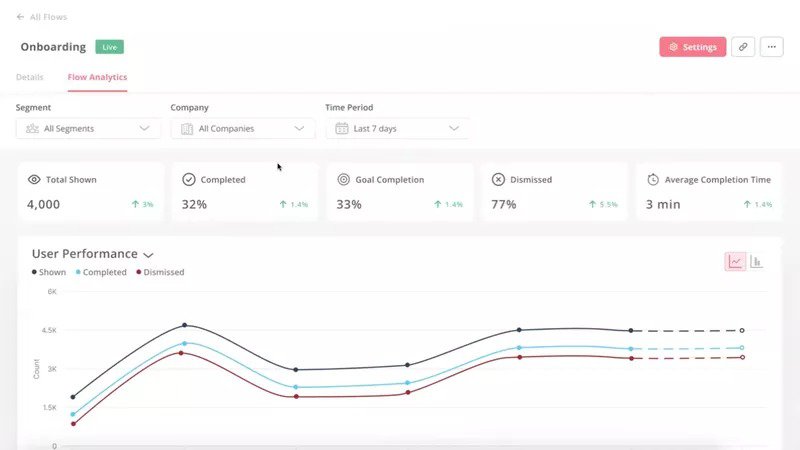
Google Analytics
Google Analytics is a powerful cross-platform tool that provides insights into user behavior, marketing effectiveness, and revenue attribution. It helps SaaS companies to track user interactions on their website, app, and more.
The data you collect can also help you to identify high-value customers, personalize the customer experience based on user preferences, and optimize your pricing strategies.
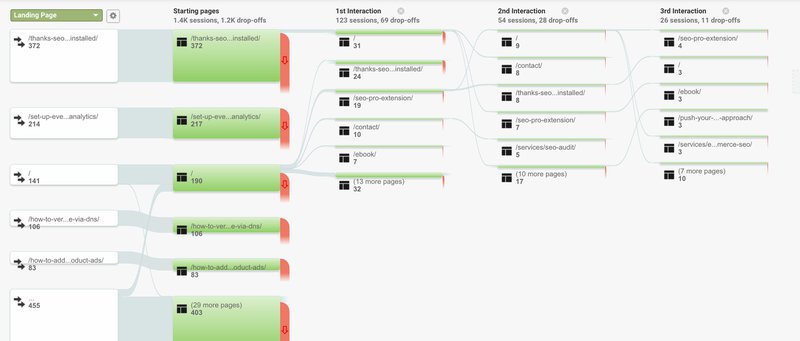
Conclusion
Data-driven insights are vital for SaaS businesses looking to develop effective business strategies. They help you develop growth strategies that keep the revenue flowing and growing.
Userpilot can help you get started with a data-driven strategy. It helps you gather relevant data, analyze this data, and extract any useful insight into the data.
To see its features in action, book a demo now.


